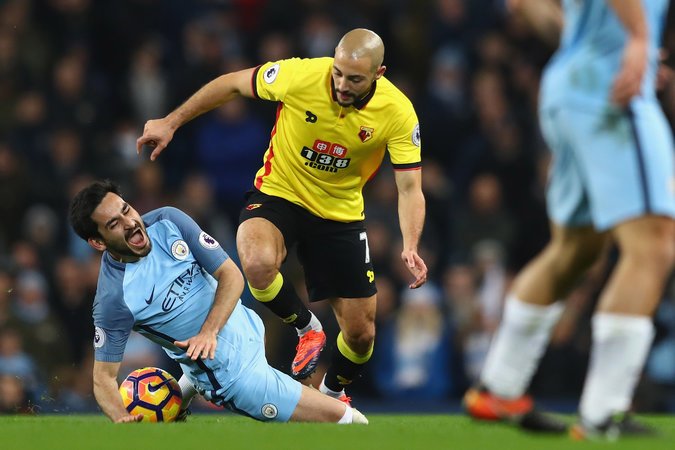Credit
Michael Steele/Getty Images.
“I thought something was wrong,” he said. “I knew I had to come out.”
A few minutes later, in the treatment area that sits on the other side of the wall from the first-team changing room at City’s Etihad Stadium, Sala’s on-field suspicion — a ruptured anterior cruciate ligament — was confirmed with a few cursory tests.
Many athletes fear a torn A.C.L. more than any other injury. It is not as visibly painful, or as gruesome, as a broken bone, but it is much more menacing. Not so long ago, it was more often than not the end of a career; even now, many who suffer it find they are never quite the same.
Deep down, as Gundogan watched the second half of that December game against Watford on a laptop in silence, his knee packed in ice, he knew what was coming. He tried to be optimistic.
“People know what to do now,” he thought. “They know how to operate, how to do rehab, how long you are out.”
He had steeled himself for the worst. Now he just had to face it.
What he was facing, though, was intimidating. There would be the delicate hours of surgery, the endless days of rest, the long, slow weeks and months that would teach him first to walk, then to run, and finally to play again.
Continue reading the main story

